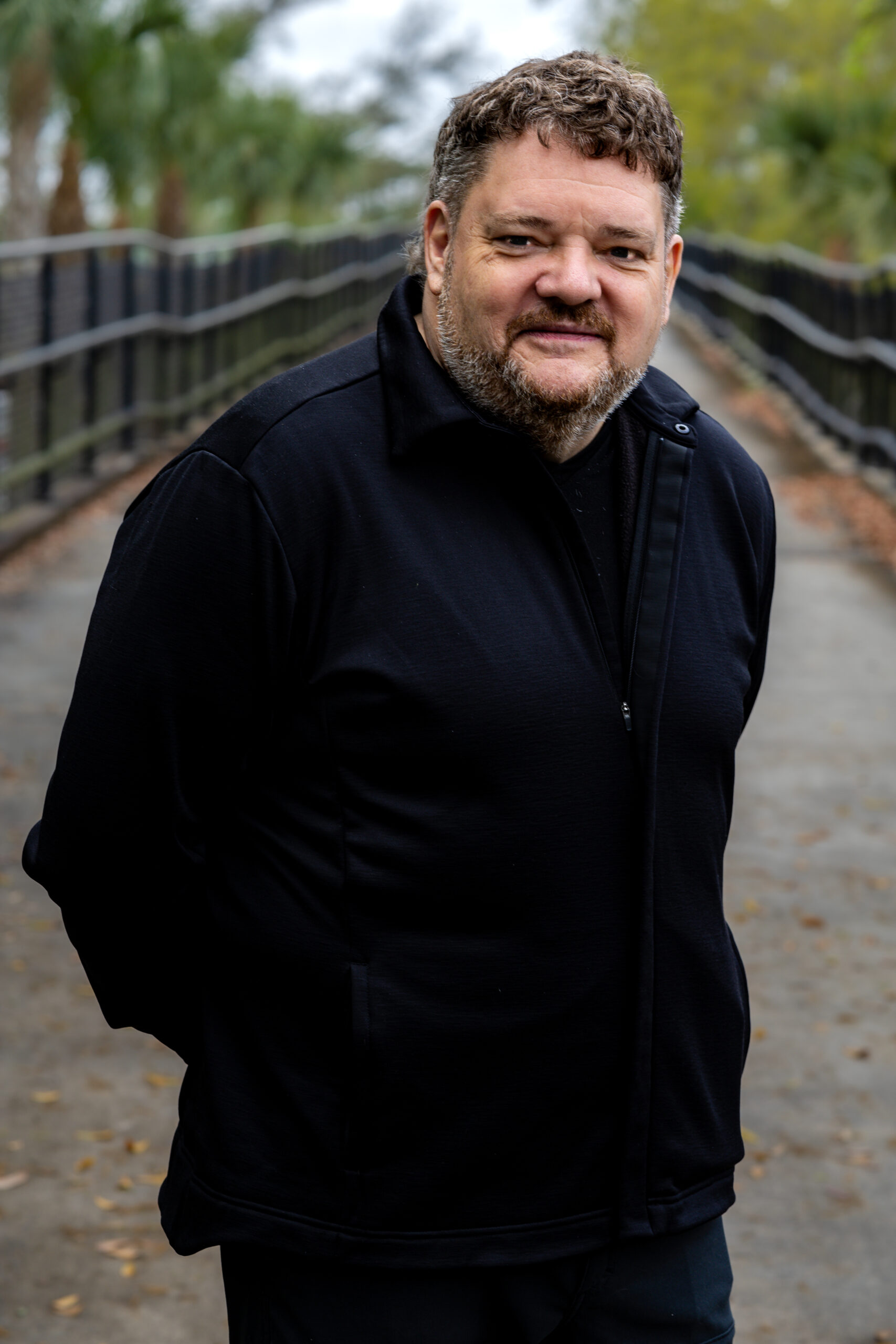5 Lessons In Light – John Featherstone
Posted on October 7, 2025
Spanning time and more than a few changes in style, culture, and technology, as he’s navigated his way through concert, theatrical, broadcast, corporate, and just about every imaginable genre in his storied career, this English-born designer has worked relentlessly on the art (and science) of making lighting meet the moment. It’s a mission he is still perfecting today!
A leader in the design industry, riding the cutting edge of technology, he is perennially in pursuit of the next great project. John Featherstone told us, “I believe my most successful projects are a blend of diverse tools and techniques. They combine the attention to detail of the best museum environment, the style and panache of a high-end retail gallery, the drama of a theatrical production mixed with the excitement of a rock concert.”
After starting out as a teenager, lighting a band destined to become as world-famous as The Smiths, he went on to lend his vision and fine eye for detail to rock stars like The Cure, Duran Duran, Van Halen, and The Pretenders, amongst others. After moving to the USA in 1989, he cofounded the global design studio Lightswitch with Norm Schwab in 1993.

Beyond concert lighting, he has been involved in groundbreaking attraction and event designs like the Illumination Tree Lights at Morton Arboretum and the award-winning Virgin Galactic Unity 22 launch, as well as corporate events for companies ranging from Apple to Zimmer Biomet. He has also worked on the recently concluded (just to restart with an all-new show!) blockbuster “Hans Zimmer Live,” and the recently concluded “My Last Trick” tour by Halsey.
Through it all, John Featherstone has not only been a designer, he has also been a generous and inspiring teacher, not only to those who’ve developed their careers at Lightswitch, but to designers everywhere who’ve crossed his globe-trotting path. Taking the time one weekend from his busy schedule, he shared these lessons with us.

1. Be brave enough to suck at something new.
The truth is, you’ll never grow if you only ever stick to what you’re good at. No one likes being rubbish at something, but that’s exactly where the good stuff comes from. There’s something liberating about being a beginner again – stumbling through, making a mess of it, and learning as you go. It keeps your mind sharp and your work fresh. The moment you stop worrying about looking daft is the moment you start really learning.
So, pick up a new skill, mess about with a new bit of kit, sketch something terrible, or just dabble in making art for the sake of it. Half the time it’ll be a dog’s dinner, but that’s fine – it keeps your brain ticking over and stops you from getting stale. Honestly, the act of creating, however rough around the edges, is far more valuable than standing still — and who knows? Maybe you’ll stumble onto something brilliant, but you won’t ever surprise yourself by doing nothing!
2. A defeat that makes you humble is better than a win that makes you arrogant.
We’ve all had projects that didn’t land the way we hoped, where you walk away thinking, ‘Well, that could’ve gone better.’ Painful? Yes, but those are also the ones that teach you the most. A shiny win feels good in the moment, sure, but it can also trick you into believing your own press, and that’s dangerous, because you can start believing your own hype.
A defeat, though? That’ll bring you back down to earth. It forces you to listen more closely, to pay attention to what went wrong, and to sharpen your instincts for next time. And here’s the thing: it makes you a much better teammate and easier to work with, too. No one wants to work alongside someone who thinks they’re God’s gift to design. Better to take the hit, learn from it, laugh about it once it’s not so raw, and dust yourself up and move on. Even the best fall down sometimes.
3. Allow the potential for failure.
My gran used to say, ‘If your ideas don’t scare you a bit, you’re probably thinking too safe’ – wise words. Safe’s fine if you’re painting the garden fence, but in design, it just ends up bland. The best ideas always carry that ‘oh God, this might not work’ feeling. At Lightswitch, we’d always rather chase the thing that makes our stomachs flip – even if it wobbles, even if it falls short – because that’s where the real magic lies. Give yourself room to fail, and you might just create something you’d never have found playing it cautious. Designing with the possibility of failure isn’t reckless – it’s brave. It’s about giving yourself permission to think boldly and trusting that even if you don’t hit the mark, you’ll land somewhere interesting.
David Bowie had a great story about this. He said ‘If you feel safe in the area you’re working in, you’re not working in the right area. Always go a little further into the water than you feel you’re capable of being in. Go a little bit out of your depth. And when you don’t feel that your feet are quite touching the bottom, you’re just about in the right place to do something exciting.’ I love that notion.
4. No such thing as a bad source for a good idea.
Good ideas can come from the strangest places. A throwaway comment from a crew member, an audience reaction, even a complaint – they all tell you something about how your work is being received. You don’t have to do exactly what they say, but you should listen. Their take is a useful gauge of how the work’s landing.
Crew, especially, because they see loads of designs go up and down, and their perspective is gold. Conversely, sometimes the best insights come from people outside the design bubble, because they see the work with fresh eyes. Treat every voice as worth hearing, and you’ll be surprised what you pick up. Inspiration doesn’t care where it comes from, so neither should you.
5. Never let art or ego stand in the way of a good invoice.
‘Never let art or ego stand in the way of a good invoice’ is a quote by the wonderful Tom Mendenhall, founder of FM Productions and a man whom I learned a lot from. He’s right – at the end of the day, this isn’t about being a tortured artist, it’s about doing the job well.
We’re designers, which means balancing creativity with the boring but vital stuff: working as part of a broad creative team and being mindful of the needs of audio, video, production, and, crucially, the client. If the design doesn’t serve the bigger picture, it’s just decoration. There’s pride in creating something beautiful, of course, but there’s equal pride in knowing it’s delivered on time, on budget, and with a smile all the way. Ego doesn’t pay the bills. Pragmatism does.
